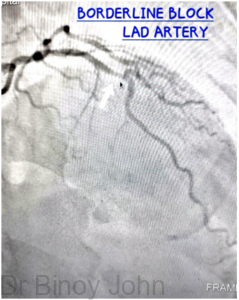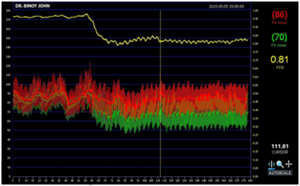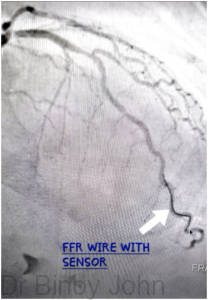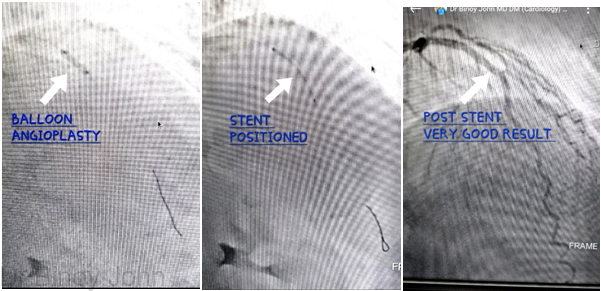Do all blocks in the coronary arteries need angioplasty and stenting?
All blocks in the coronary arteries, the arteries of the heart do not need angioplasty or stenting. Only blocks more than 70% or impede blood flow to the heart muscle need angioplasty. In this context, it is also important to note that all 100% chronic blocks also do not need angioplasty or stents.
Angiograms are only two dimensional images and sometimes when an angiogram is performed, a block may appear 70% or more in some projections or views and less than 70% or borderline (See image) in some projections causing a treatment dilemma of whether to stent the block or not. This is where the coronary physiologic indices are used to find out if stents are needed or whether treatment with medicines would suffice.

The common coronary physiologic indices used are Fractional flow reserve (FFR), Resting full cycle ratio (RFR) and Instantaneous wave free ratio (IFR). These indices have cut-off values and when more than a particular value, do not need stenting and medical management would suffice. But these patients need to be followed up regularly. The cut off value for medical management of FFR is > 0.8 and for RFR and IFR and > 0.89. For patients with these values, studies have shown that stenting has an adverse outcome compared with medical management
The procedure is similar to an angiography and angioplasty and involves performance of an initial coronary angiogram with dye and identifying the borderline blocks. Thereafter a thin wire called the FFR wire with a sensor at the distal end of the wire is inserted into the artery of interest, and placed beyond the block, just as during an angioplasty. This wire is connected to an external console which measures the pressures in the Aorta and pressure beyond the block via a sensor on the FFR wire. After some settings are checked, a medication called adenosine is given intra-venous or directly into the artery, to obtain dilatation of the coronary arteries and micro-circulation. During this time the sensor continuously measures the pressures to give the FFR ratio. (See image) The image shows the FFR ratio of a patient who had a borderline block in the LAD artery. FFR was performed and it showed a value more than the cut off of 0.8 and he was put on medical management.

The following images are of a patient, with a borderline block in the LAD artery on conventional angiogram.

It was decided to do an FFR assessment as this patient’s exercise stress test was positive. A FFR wire was placed in the LAD artery, beyond the block and adenosine injection was given intra-venously.

Interestingly the FFR turned out positive with a value below 0.8 at 0.76, which indicated that the flow was obstructed by the block. Therefore balloon angioplasty and stenting was planned.

Balloon angioplasty was performed followed by stent placement and deployment to get a good flow in the artery.

Expertise: Dr Binoy John has been performing FFR since 2013 and has avoided angioplasty and stenting in numerous patients with the use of FFR, many of whom are doing well on medical treatment. He has authored chapters on use of FFR in cardiology text books and given numerous lectures in national and international conferences.
Watch Video: Talk on use of FFR, RFR, iFR in TCS-AP 2024, Seoul, South Korea.






